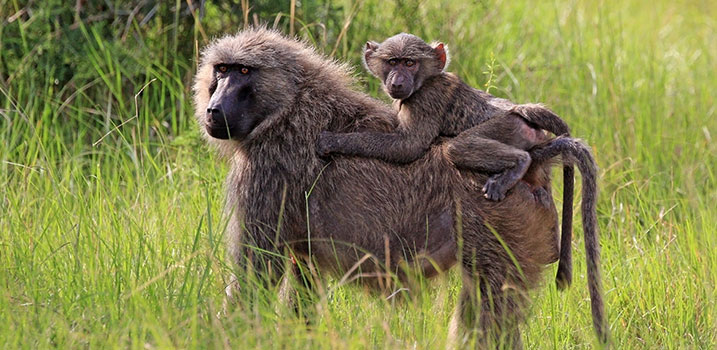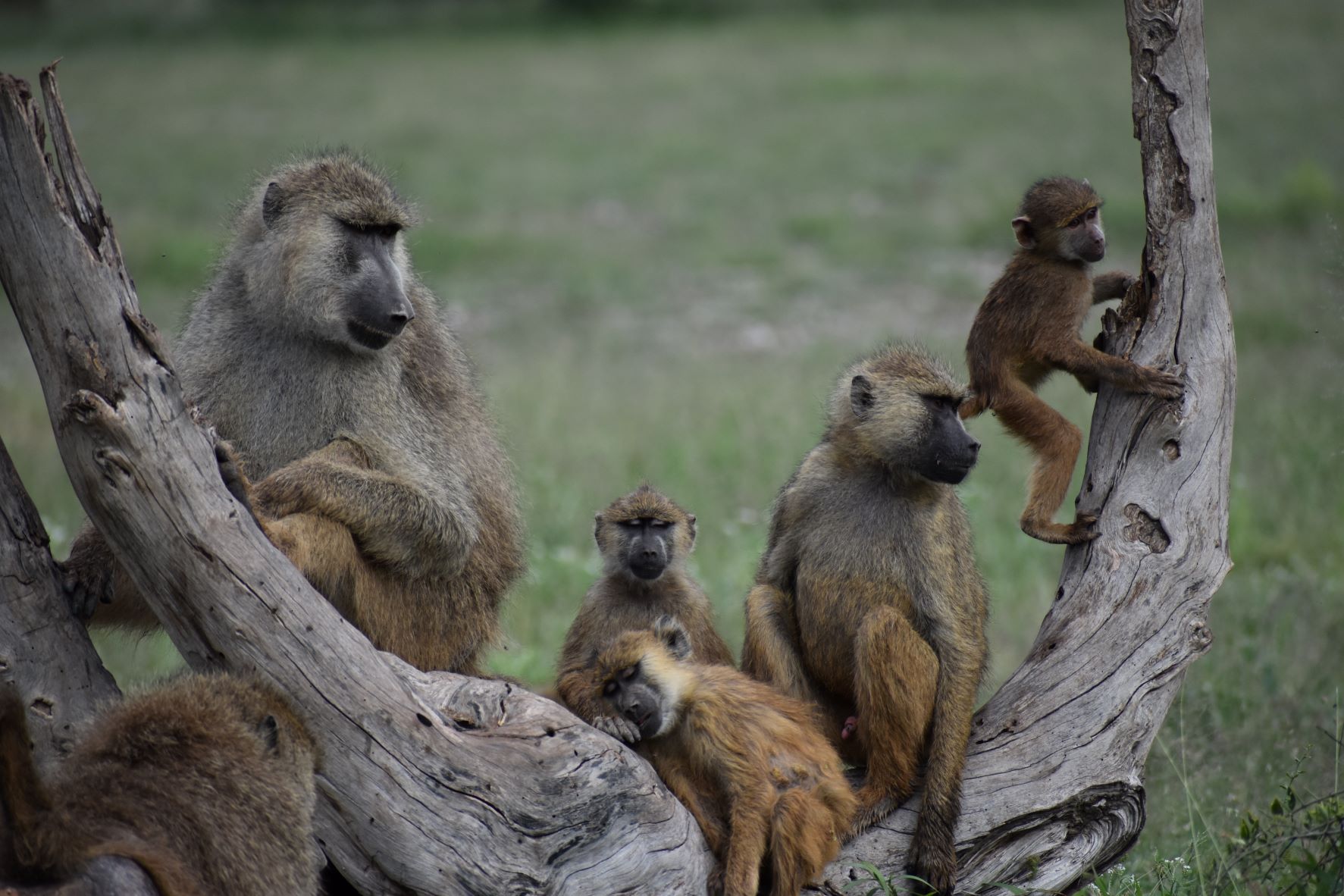
Facts About Baboons
Facts About Baboons: Baboons are primates, and they are among the biggest in the world. The olive, yellow, chacma, Guinea, and holy baboons are found in a variety of settings throughout Africa and Arabia. The olive baboon is the most common species in the baboon family. Primates tours in Uganda or gorilla trekking safaris in Uganda will allow you to witness baboons in their native habitats, as well as other primate species such as chimpanzees in Kibale National Park, Budongo forest, Kalinzu forest and Kyambura Gorge in Queen Elizabeth national park and, of course, the elusive mountain gorillas in Bwindi Impenetrable and Mgahinga Gorilla National Parks.
Because the baboon, like other Old World monkeys, lacks a prehensile (gripping) tail, it cannot be used as a hand, yet it can still climb when necessary. They all have sharp canine teeth, canine noses, and dense fur. Males have a longer mane that wraps over their neck, referred to as a ruff.
How do Baboons look like?
Baboons all have long, dog-like muzzles, heavy, muscular jaws with sharp canine teeth, close-set eyes, thick fur except on their muzzles, short tails, and ischial callosities, which are nerveless, hairless skin pads on their projecting buttocks that provide sitting comfort. Male hamadryas baboons have a large white mane. Baboons exhibit sexual dimorphism in size, color, and/or canine tooth development.
Types of Baboon.
Baboons are divided into six species: the hamadryas baboon, the Guinea baboon, the olive baboon, the yellow baboon, the Kinda baboon, and the chacma baboon. Each species is native to one of Africa’s six regions, with the hamadryas baboon native to a section of the Arabian Peninsula. Baboons have been alive for at least two million years and are the largest non-hominid primates.
How big are Baboons?

Baboons vary in size and weight according on the species. The Kinda baboon is the smallest, measuring 50 cm tall and weighing 14 kg, while the Chacma baboon may grow to reach 120 cm long and 40 kg.
Baboons are migratory and terrestrial during the day, but spend the night hiding from predators in trees, high cliffs, or on rocks. They may be found all throughout Africa in savannahs and woodlands. They consume grasses, seeds, roots, leaves, bark, various fruits, insects, fish, shellfish, rodents, birds, vervet monkeys, and small antelopes.
Their principal predators include Nile crocodiles, leopards, lions, and hyenas. Baboons live in hierarchical groups with harems for the most part. Baboons may identify individual dominance connections based on vocal exchanges.
In general, any male can mate with any female; the social position of the men influences their mating order. Females typically give birth to one child after a six-month gestation. Females are often the primary caretakers for their children, however many females may share responsibility for all of their children. The pups are weaned after about a year.
Between the ages of five and eight, they reach sexual maturity. Males frequently leave their natal group before sexual maturity, but most females remain in the same group their whole lives. Baboons in captivity may live for up to 45 years, although they only live for 20 to 30 years in the wild.
The principal predators include Nile crocodiles, lions, spotted and striped hyenas, and leopards. They are, however, considered tough prey for the leopard, which mostly threatens immature baboons. Large males will frequently confront them by yawning, flashing their eyes, making movements, and running towards the intruder/predator. Despite the fact that baboons are not prey, the black mamba snake has killed them. A baboon accidentally rousing the snake is a common cause of this, Facts About Baboons
Uganda boasts one of the world’s largest baboon populations. Olive baboons may be encountered in large numbers in Budongo forest when doing chimp trekking and along Karuma in northern Uganda as you travel to Murchison Falls National Park. Baboons are also seen in Kenya and Tanzania.
Overall, baboons are losing their habitats owing to overgrazing, agricultural development, irrigation projects, encroachment into their habitats, deforestation, and poaching, particularly in nations such as the Democratic Republic of the Congo.
It is now up to us to safeguard these species by educating our communities about the value of baboons in the natural eco system, protecting their natural habitats, and supporting anti-poaching initiatives.


